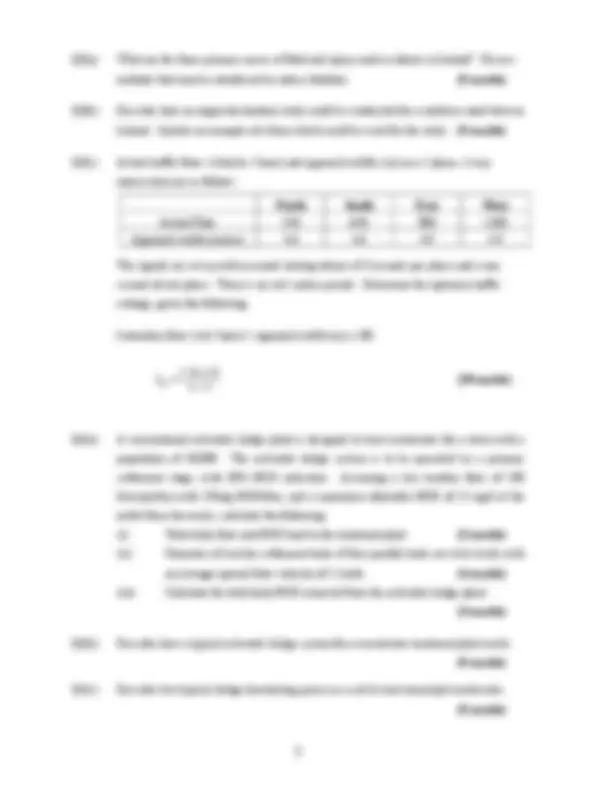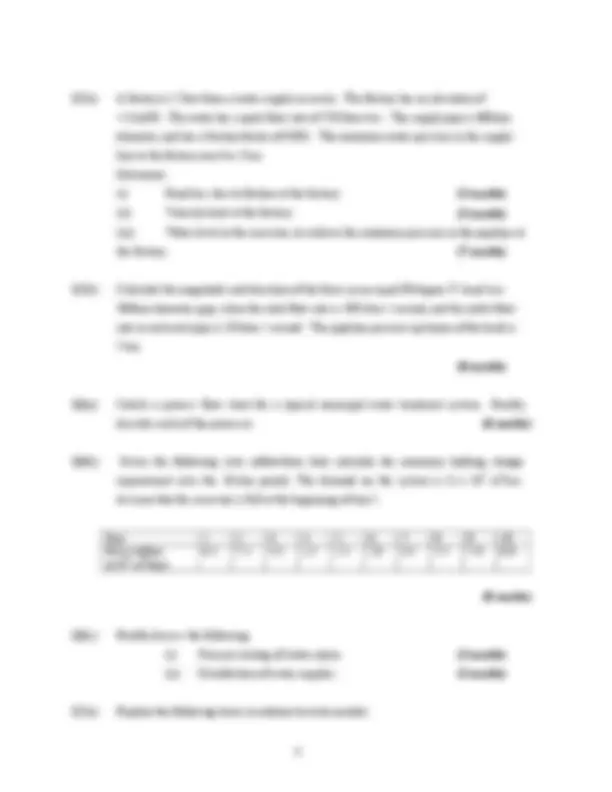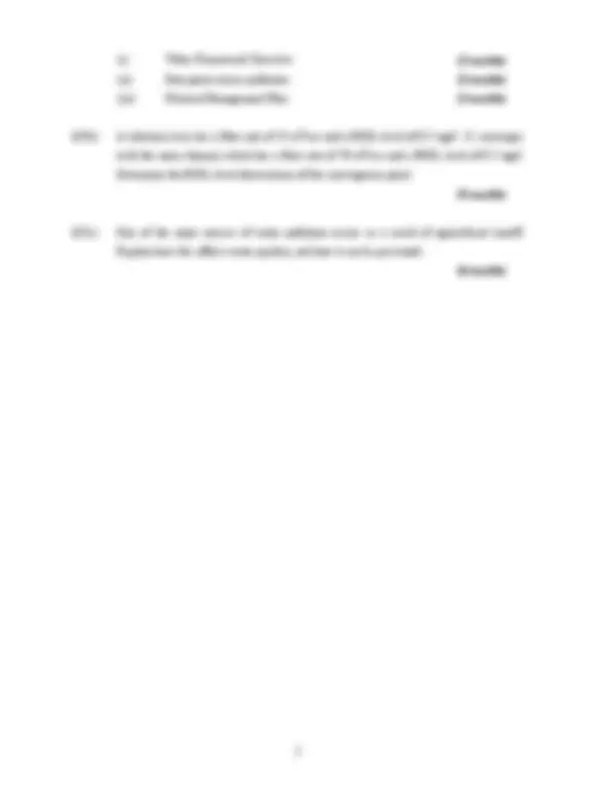





Study with the several resources on Docsity

Earn points by helping other students or get them with a premium plan


Prepare for your exams
Study with the several resources on Docsity

Earn points to download
Earn points by helping other students or get them with a premium plan
Community
Ask the community for help and clear up your study doubts
Discover the best universities in your country according to Docsity users
Free resources
Download our free guides on studying techniques, anxiety management strategies, and thesis advice from Docsity tutors
Main points of this past exam are: Open Channel Flows, Parshall Flume, Calculate Rainfall Intensity, Rating Curve, Potential Evapotranspiration, Tipping-Bucket Rain Gauge, Household Hazardous Waste, Sustainable Development
Typology: Exams
1 / 5

This page cannot be seen from the preview
Don't miss anything!




Instructions Answer 5 questions All questions carry equal marks.
Examiners: Mr. L O’Driscoll Mr. P. Anthony Mr J. Murphy
Q1(a) In what circumstances would you use (a) a Parshall Flume, or (b) a weir to measure open channel flows? What are the advantages and disadvantages of each method? (6 marks)
Q1(b) Calculate the (^) total rain-water runoff from a car-park area, with plan dimensions 250m by 450m. The design rainfall used should be of 60 minute duration, with a 10 year return period. Use the Dillon equation to calculate rainfall intensity. Use the Rational Method to calculate runoff from the catchment areas. Assume 100% runoff from impermeable areas.
Dillon Equation (^35) p^15 t
Rational Equation Q(l/s) = 2.78 A(ha) I(mm/hr) (8 marks)
Q1(c) Explain the following hydrological terms: (i) Potential evapotranspiration (ii) Tipping-bucket rain gauge (iii) Rating Curve (6 marks)
Q2(a) Explain the following terms in relation to solid waste management:
(i) Household hazardous waste (ii) WEE Directive (iii) Waste management hierarchy (6 marks)
Q2(b) Explain the term “Sustainable Development” in relation to solid waste management. (4 marks)
Q2(c) Discuss how construction and demolition (C&D) waste can be reduced at source by construction firms. Give examples of different types of C&D waste. Show how each of these could be reduced. Refer to the waste management hierarchy for each of these examples. (5 marks)
Q2(d) Explain how modern landfills are designed to prevent leakage of leachate to groundwater. Use sketches if necessary to explain your answer. (5 marks)
Q5(a) A factory is 12km from a water supply reservoir. The factory has an elevation of +15mOD. The water has a peak flow rate of 750 litres/sec. The supply pipe is 600mm diameter, and has a friction factor of 0.001. The minimum water pressure in the supply line to the factory must be 2 bar. Determine: (i) Head loss due to friction at the factory. (3 marks) (ii) Velocity head at the factory. (^) (2 marks) (iii) Water level in the reservoir, to achieve the minimum pressure in the pipeline at the factory. (7 marks)
Q5(b) Calculate the magnitude and direction of the force on an equal 90 degree T- bend in a 300mm diameter pipe, when the inlet flow rate is 100 litres / second, and the outlet flow rate in each exit pipe is 50 litres / second. The pipeline pressure upstream of the bend is 5 bar. (8 marks)
Q6(a) Sketch a process flow chart for a typical municipal water treatment system. Briefly describe each of the processes. (6 marks)
Q6(b) Given the following river inflow/time data calculate the minimum holding storage requirement over the 10-day period. The demand on the system is 6 x 10 5 m^3 /sec. Assume that the reservoir is full at the beginning of day 1.
Day 1 2 3 4 5 6 7 8 9 10 River Inflow (x10^5 m^3 /day)
(8 marks)
Q6(c) Briefly discuss the following: (i) Pressure testing of water-mains (3 marks) (ii) Disinfection of water supplies. (3 marks)
Q7(a) Explain the following terms in relation to water quality:
(i) Water Framework Directive (^) (3 marks) (ii) Non-point source pollution (3 marks) (iii) Nutrient Management Plan (3 marks)
Q7(b) A tributary river has a flow rate of 25 m^3 /sec and a BOD 5 level of 0.7 mg/l. It converges with the main channel, which has a flow rate of 78 m^3 /sec and a BOD 5 level of 0.5 mg/l. Determine the BOD 5 level downstream of the convergence point. (5 marks)
Q7(c) One of the main sources of water pollution occurs as a result of agricultural runoff. Explain how this affects water quality, and how it can be prevented. (6 marks)